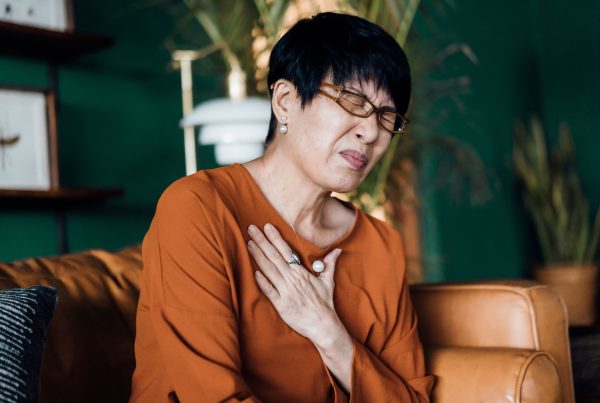Depending on the acuteness or chronic nature of your condition, we offer variety of pain management options that go beyond prescription medications or surgery.
It doesn’t matter if you have pain that just popped up this morning, or if it’s a chronic issue you’ve lived with for months or years. Making an appointment with a specialist at The MetroHealth Pain and Healing Center is the first step to finding a solution.
No referral is necessary to make an appointment. But you should have an open mind about treatment options, said Chong Kim, MD, a pain management specialist and Director of MetroHealth’s Pain and Healing Center.
“Everything is on the table, and we prioritize in terms of what’s realistic,” Dr. Kim said. “We talk about the patient’s condition, what appropriate alternatives to medication or surgery might exist, the patient’s willingness, and how accessible an option is.
“We tend to stay as conservative as possible and start with the least invasive options,” he said.
While surgery may end up being the best option for treating pain (bone-on-bone knee pain cause by osteoarthritis of the knees, for example), a pain specialist will evaluate and suggest other options for those who want to avoid an invasive procedure.
“The patient really dictates the extent of what we can do,” Dr. Kim said. “We are their support and can ultimately guide them to what they’re most comfortable with.”
Depending on the acuteness or chronic nature of your condition, a pain specialist can offer or refer you to a variety of alternative pain management options that go beyond prescription medications or surgery. They include:
- Osteopathic manipulation, a hands-on therapy that involves gentle pressure to the muscles, soft tissues and joint.
- Nutrition evaluation, sleep evaluation and/or tobacco cessation programs to see how diet modification, improved sleep hygiene and quitting smoking can improve or eliminate pain.
- Meditation and biofeedback under the care of a psychologist.
- Acupuncture, a component of traditional Chinese medicine in which very thin needles are inserted through the skin.
- Outpatient physical therapy, one of the most accessible options whose success hinges on consistency. “Going to therapy is just the start,” Dr. Kim said. “Continuing the program on their own is the solution. When you’re not hurting is exactly when you need to continue, so it doesn’t hurt again.”
- Chiropractic care (may depend on patient’s insurance).
Other options typically not covered by a patient’s insurance but that might be beneficial for pain management include:
- Massage therapy (deep tissue, Swedish, sport, hot stone, aromatherapy, reflexology, etc.)
- Energy healing (Reiki)
- Herbal and naturopathic medicines, vitamins, and dietary supplements*
- Dry needling
- Community and local health classes and programs (examples include yoga, tai chi, and water exercises)
*These products do not have to be approved by the Food and Drug Administration or require a prescription.
Patients also can consider taking up a low-impact exercise like yoga and tai chi that can be easily done at home if these are appropriate options discussed by your physician.
“Pain is more frustrating than most conditions because there isn’t always a medication or procedure to reverse it”, said Dr. Kim. “And what may work for a 20-something patient may not have the same outcome for someone in their 50s, 60s and up”.
“If you’re younger, we expect your body to do a lot of the work to heal. But when we’re older, we don’t bounce back as quickly.”












